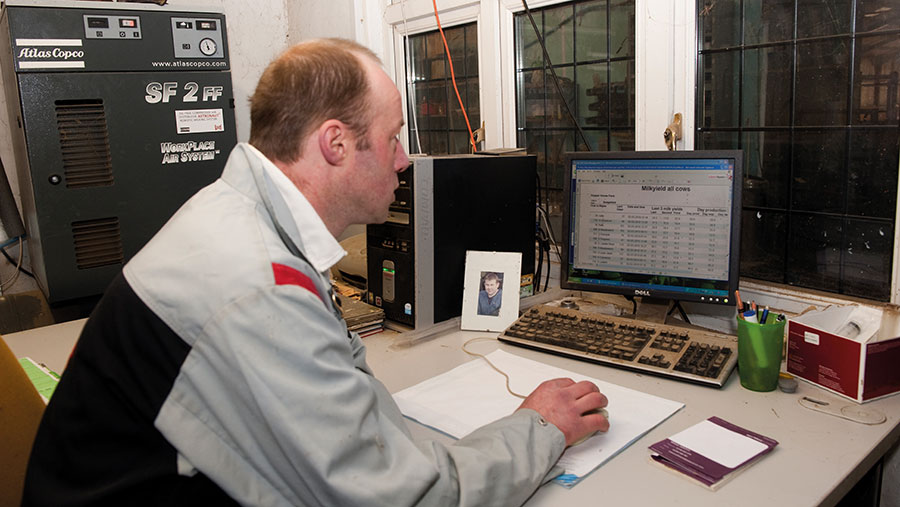Top tips for end-of-year tax planning
 © Wayne Hutchinson
© Wayne Hutchinson As the tax year-end approaches, there are opportunities for farmers to reduce or defer their tax bills. Debbie James asks the experts for their tips on spreading the tax burden and making the best use of allowances.
1. Check your current position
Look at the position for the first nine months of the year, which is more easily done now than ever with the adoption of bookkeeping software.
Make some projections based on this to see if there might be any surprises in store with tax payments, suggests Daniel Heal, an adviser with rural accountant Old Mill.
“Look at the cash position too, to see whether any planned spending can be made out of cash reserves or if it needs financing,” he says.
2. Consider whether averaging is useful
Profit averaging is available to farming businesses over two- or five-year periods, depending on historic profits.
This is a useful option to spread profits over any poorer years without spending money, says Mr Heal.
“Your accountant should be able to advise on any unused allowances in previous years that can be taken advantage of by averaging.”
See also: How does tax averaging work for farmers
Averaging is available to sole traders and partnerships, but not limited companies.
3. Pension contributions
The current pension legislation means that when a company pays pension contributions to a director’s pension fund, this can be a tax-efficient method to extract profits from the company.
Providing sufficient profits have been made, consider the maximum contribution of up to £40,000 a person a year.
Top-ups are allowed for the previous three years, provided a pension scheme has been running for the individual.
“This is a good way to get tax relief on any surplus cash if investment and spending isn’t needed, while planning for your future income too,” says Mr Heal.
Peter Griffiths, tax director at accountant Hazlewoods, advises that in certain circumstances, an individual’s pension fund can pass to the next generation with no tax charge.
4. Repair work
Major repair work can qualify for full tax relief. Mr Heal recommends planning which year it will fall into to make the most of the relief.
“The year to 5 April 2022 looks to be quite good for farming, with costs likely to bite into profitability in 2023,” he says.
“Bringing forward repair projects could save higher rates of tax, providing materials and labour can be sourced for the projects.”
5. Purchases of plant and machinery before the year-end
Buying equipment purely to save tax will result in poor cashflow, Mr Heal cautions, but where there is a need to update equipment, getting it in before the end of the year will mean the tax relief is a year earlier than if the purchase is at the start of next year.
Allowances are generous, with businesses being able to claim up to £1m in full against income for plant and machinery purchased, although delays in delivery must be planned for to ensure full relief.
Limited companies are currently able to offset 130% of the cost of brand-new machinery, for the first £10m of spending, with the so-called super deduction introduced in the 2021 budget.
Mr Griffiths points out that if the resulting capital allowances create a tax loss, this can be carried back to earlier years and potentially result in a tax refund.
6. Sales of produce and stock valuations
Home-grown produce in stock at the end of the year can be valued at 75% of market value, or for cattle, 60%.
It may be possible to hold back some sales at the year end, making the sale in the early part of next year.
Mr Heal says this is more suited to arable enterprises with storage, but can move the profit forward into the following year where input costs are likely to be higher.
“Of course prices may fluctuate, so take care if using this strategy,’’ he warns.
7. Plan for NI increases
National Insurance rates increase by 1.25 percentage points for self-employed partners and sole traders from 6 April 2022.
“While it may seem counter-intuitive, realising profits in the current year may result in less tax being paid overall, provided it doesn’t push earnings into higher rate tax bands,’’ says Mr Heal.
8. Maximise ISA allowances
If there is cash available for savings, up to £20,000 a person a year can be put into an Individual Savings Account (ISA), allowing it to earn tax-free income for the future without locking it up as in a pension fund.
There is no tax relief on the initial investment but, as Mr Heal points out, it is possible to make a useful income tax-free once the money is inside the ISA wrapper.
9. Annual gift allowance
At up to £3,000 a year, this is fairly small in the grand scheme of things, but each individual can gift this amount annually and it immediately falls outside of an estate for inheritance tax purposes.
It is a useful means of passing wealth down the generations, where there is some cash available.
Catch-ups are available for one previous year.
10. Year-end provisions
Where a business has not had the opportunity to carry out repair work on buildings, for example for damage incurred before the year end, it is possible to include a tax-deductible provision for this work in the accounts, says Mr Griffiths.
“This can be done when the amount can be accurately estimated, and the work is carried out in the next accounting period,’’ he says.
Take advice
This is key to avoiding surprises, says Mr Heal.
“Some comfort can be had in knowing your business is in the best position for tax purposes,’’ he says.
“But remember, tax rates are never 100%, so making a profit will always result in some benefit, even after tax.’’
